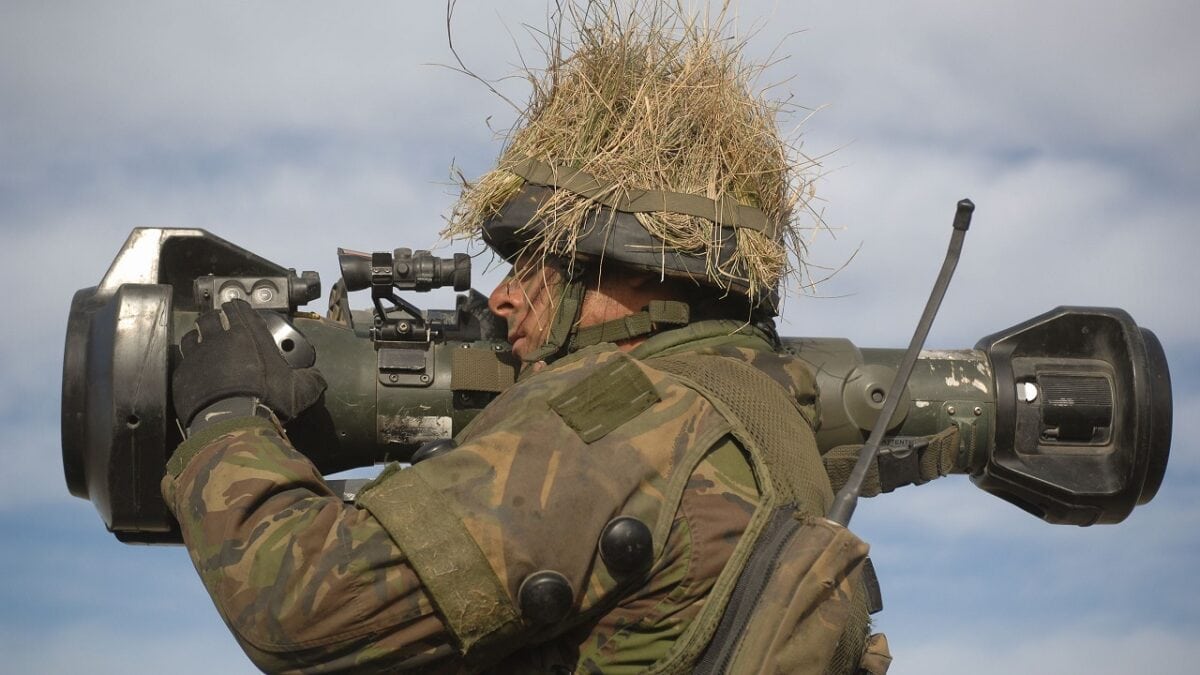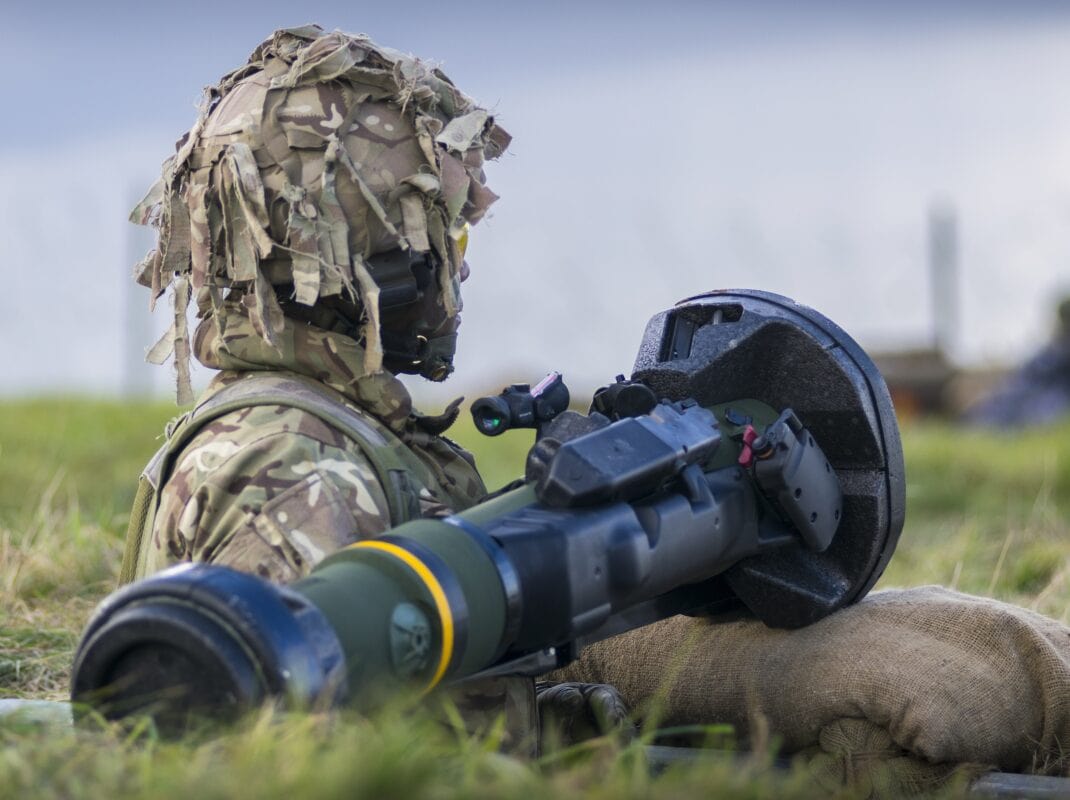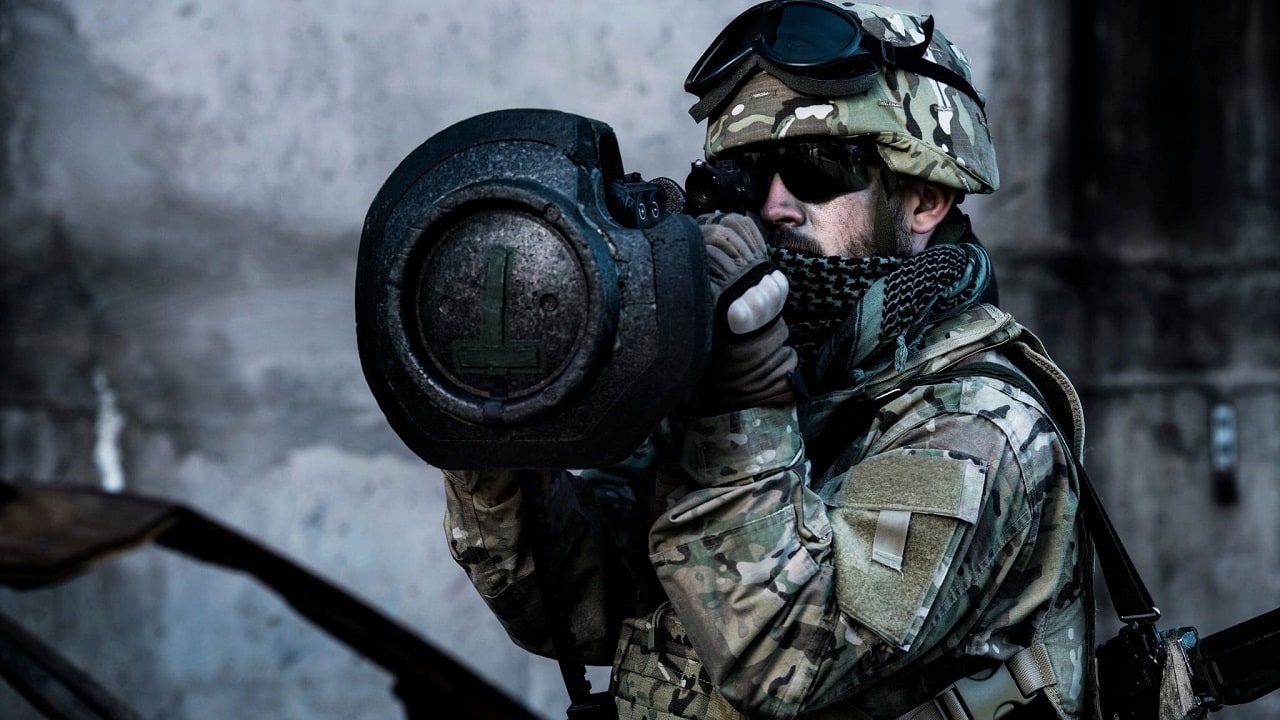British-provided NLAW Anti-tank System Turning the Tide in Ukraine – Scrappy NLAW anti-tank missiles have the punch to eliminate Russian tanks. The Next Generation Light Antitank Weapon (NLAW) was provided by the British before the war in January. The Ukrainians are setting up counter-attacks and ambushes in the suburbs of Kyiv on Russian armored columns using the NLAW. The NLAW system is proving its mettle. Since the NLAWs came over before the war started, they were able to be distributed widely to soldiers, and the Ukrainians are taking the initiative to blast Russian armor.
Watch Out for NLAW Ambushes
The Visegrad Group 24 news outlet reported on March 2 that the Russians tried to advance in the Kyiv suburb of Bacha under the cover of darkness. According to Visegrad Group 24, the Ukrainians used the NLAW in an ambush that laid waste to Russian tanks and other vehicles. You can see a photo of the destruction here.
The British Set the Example
The United Kingdom sent 2,000 NLAWs to the Ukrainians on January 19 and most importantly, the military sent trainers to prepare the Ukrainians for their use. The defending forces are singing the weapons’ praises.
Ukrainian Fighters Are Thankful
According to the Daily Mail, whose reporters visited the front 50 miles north of Kyiv, Lieutenant Colonel Ihor Bezogluk, exclaimed “God save the Queen!” Bezogluk also said the NLAW is a “game changer.”
The officer continued with his praise. “Thank you to Great Britain for giving us the NLAWs – anything that can help us to defend our country is very well-received. These missiles have changed the war for us. It means we can fight the Russians and it doesn’t matter how many of them there are now that we have a way of stopping their armor. The Russians cannot scare us with numbers anymore.”
What Is the NLAW?
The NLAW is a light shoulder-fired weapon with excellent portability that allows the operator to also carry a rifle. The launcher weighs around 27.5 pounds and is easy to fire. It shoots a surprisingly powerful 150mm high-explosive anti-tank missile. The NLAW can take out a tank or vehicle between 20 and 400 meters for moving targets, and up to 800 meters for stationary vehicles.
NLAW Is Easy to Use
Operators just have to look through the sight, line up the target, and hold for three to five-second before firing. Then the “Predicted Line of Sight” inertial navigation and guidance system takes over and the rocket blasts out of the tube at 440 miles per hour. So, it’s “fire and forget.”

A soldier is pictured aiming a practice NLAW (Next Generation Light Anti-Tank Weapon). This training aid simulates the real NLAW launcher but fires a laser at armored vehicles equipped to receive the beam.
Like the Javelin, the NLAW can target the top of a tank’s turret where the armor is usually the weakest part. Operators just aim one meter above the tank and the downward shaped charge does the rest.
One disadvantage of the NLAW is that it is “one shot one kill.” Operators get only one missile to hit paydirt, then the tube is disposable. That’s why the British and other countries that have NLAWs will have to send more. NLAWs are also not cheap at $40,000 a unit.

Pictured is A Gunner carrying the New Light Anti-Tank Weapon (NLAW) before carrying out a live firing exercise. British Army’s Combined Arms Manoeuvre Demonstration held at Knighton Down, Salisbury Plain Training Area in October 2016. The aim was to demonstrate the capabilities of an Armoured Infantry Battlegroup as part of the Vanguard Armoured Infantry Brigade within a Reaction Force Division context. As well as a series of static stands there were two demonstrations. The first was a blank-firing maneuver showing minefield crossing and a hasty attack. The second, a live firepower demonstration, using an enemy counter-attack on a defensive position.
Perfect for Dismounted Fighters Who Can Hide in Buildings
The NLAW has many combat advantages and infantry units do not have to change tactics that much. Regular-army Ukrainian soldiers can hide in bunkers, trenches, or in buildings to allow unsuspecting Russian tanks to enter a kill zone where they will catch fire from the anti-tank weapon. Many soldiers will likely opt to shoot from atop buildings for a better downward angle against Russian armored vehicles. Another advantage is that their ease of use can be taught to less experienced reserve territorial defense fighters.
The Ukrainians are already engaging in suburban residential street-to-street fighting and expect more of this urban combat in the future as the Russians conduct assaults into the surrounded cities. The NLAW will be one weapon that the Russians have to deal with that will bring terror to many tank crews.
Now serving as 1945’s Defense and National Security Editor, Brent M. Eastwood, Ph.D., is the author of Humans, Machines, and Data: Future Trends in Warfare. He is an Emerging Threats expert and former U.S. Army Infantry officer. You can follow him on Twitter @BMEastwood.

